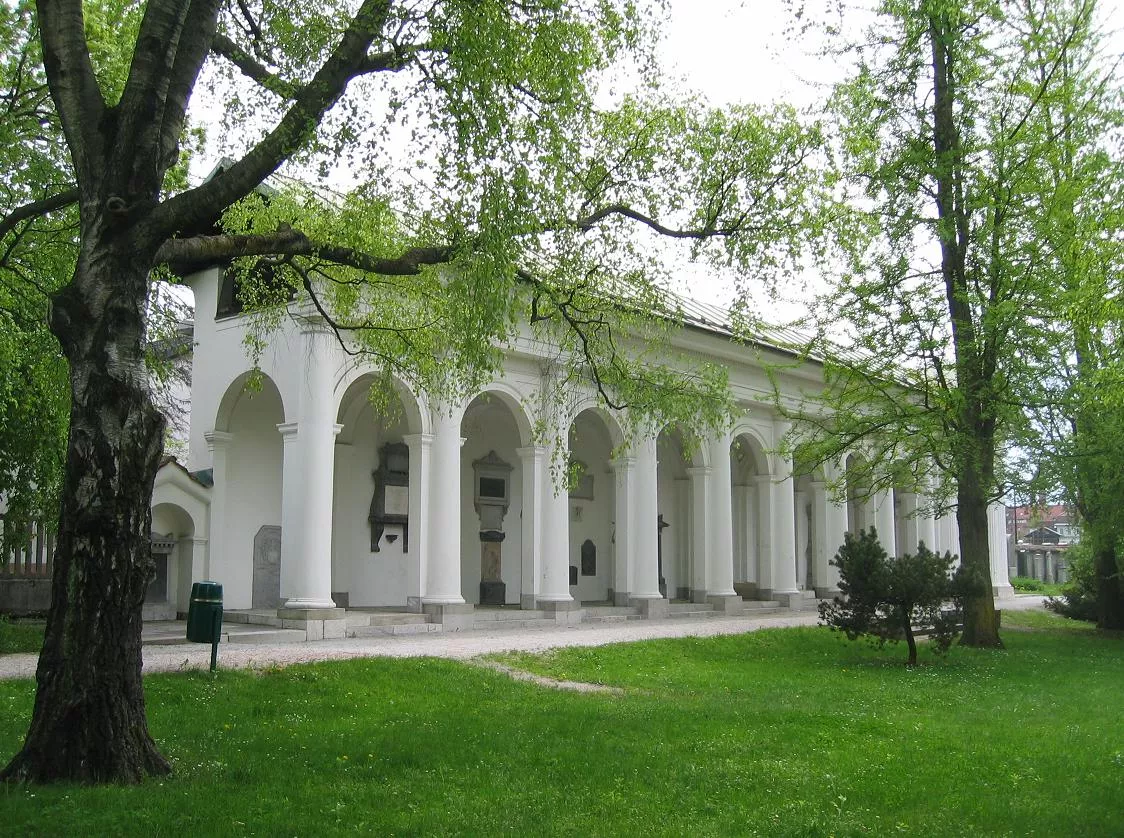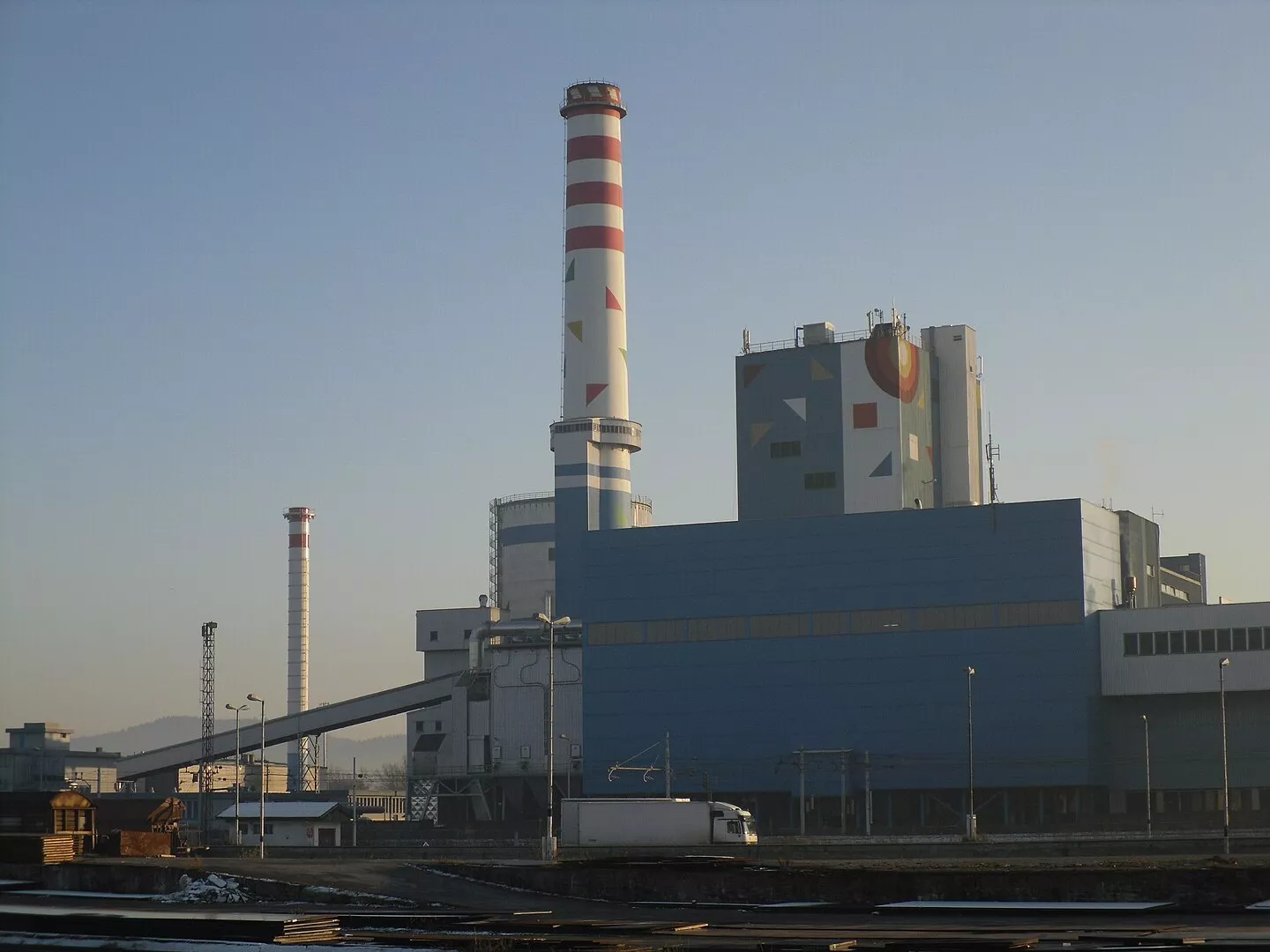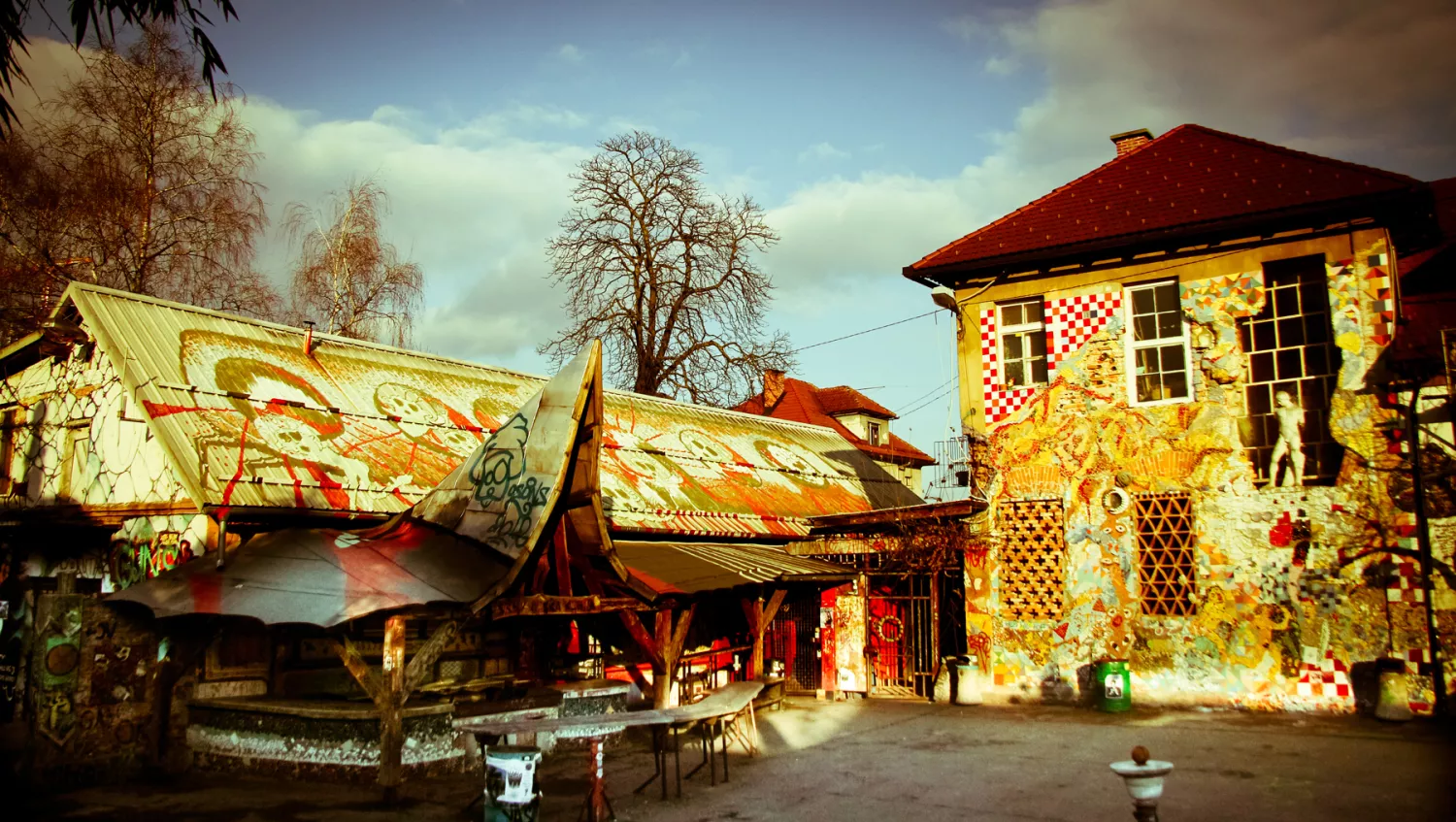Beyond the Tourist Trail: Offbeat Spots to Explore in Ljubljana
Ljubljana, the capital of Slovenia, offers more than meets the eye. While tourists flock to its iconic sites, hidden gems remain quietly awaiting exploration. Join us on a journey off the beaten path as we uncover the city's lesser-known treasures, blending history with modernity to reveal Ljubljana's true essence.
Table of Contents
Hide
1. St. Michael’s Church – A Plečnik marvel
Designed by renowned architect Jože Plečnik in the 20th century, this Roman Catholic parish church is a testament to his innovative genius. Embraced by the Ljubljana Marsh, the church's construction posed unique challenges, inspiring Plečnik to devise ingenious solutions. Supported by sturdy pillars rooted in the marshy soil, its distinct bell tower rises independently, adorned with graceful arches to reduce weight. Plečnik's resourcefulness shines through in the use of local materials, blending stone from the nearby quarry with timber donated by villagers. Completed in 1939, the church's unconventional layout surprises visitors—the altar positioned along the nave's longer side fosters intimacy between priest and congregation. Step inside to discover Plečnik's visionary approach, bridging tradition with modernity in this hidden gem of Slovenian architecture.
2. Navje Cemetery and Park
Just over the railroad tracks from Ljubljana's historic center lies Navje Cemetery and Park. Once a neglected burial ground, it now honors Slovenian luminaries amidst lush greenery. Designed by architect Jože Plečnik in the 1930s, its transformation into a memorial shrine reflects a tale of abandonment and revival. Today, visitors stroll along pathways adorned with gravestones of notable figures, soaking in the park's serene ambiance. As a testament to Slovenia's resilience, Navje stands as a place of remembrance and recreation, weaving together the threads of history and natural beauty.
3. Cyanometer
In the heart of Ljubljana, Slovenia, stands the Cyanometer—an innovative fusion of art and science. Designed by Martin Bricelj Baraga, this monolithic sculpture not only measures the blueness of the sky but also serves as a barometer of air quality. Inspired by the 18th-century invention of Horace-Bénédict de Saussure, it reflects Ljubljana's commitment to environmental awareness as the European Green Capital of 2016.
Rising over three meters tall, the Cyanometer periodically captures images of the sky, analyzing its hues against a 53-shade color wheel. Its reflective surface adapts to mimic the sky's tones, creating a mesmerizing spectacle for passersby day and night. Integrated with the Environmental Agency of Slovenia's measuring station, it provides real-time data on air quality, displayed on its surface and online.
Powered by solar panels, the Cyanometer symbolizes sustainability, aligning with Ljubljana's eco-friendly initiatives. As part of Baraga's "Nonuments" series, it embodies futuristic ideals while honoring historical scientific innovation. A beacon of environmental consciousness, the Cyanometer invites visitors to contemplate the skies above and the air they breathe, reminding us of the interconnectedness between humanity and nature.
4. Plečnik House
Discover Plečnik House, a hidden gem in Ljubljana showcasing the genius of Slovenian architect Jože Plečnik. Step into his preserved home, where his vision for Ljubljana took shape. Explore original furnishings and personal belongings that offer insight into Plečnik's life.
Immerse yourself in the Permanent Exhibition 'Plečnik,' unveiling the architect's iconic works and ambitious designs for the city. Marvel at sketches, plans, and models of masterpieces like the National Library and the Church of St Michael in the Marshes.
Plečnik House's complex includes neighboring houses and a serene garden, adorned with architectural nuances crafted from leftover materials. Learn about Plečnik's journey from apprentice to revered architect, whose visionary spirit continues to inspire worldwide.
Experience history at Plečnik House, where Jože Plečnik's legacy invites you to explore the intersection of art, architecture, and innovation.
5. Termoelektrarna Toplarna Ljubljana - Ljubljana Power Station
Discover Termoelektrarna Toplarna Ljubljana, a vibrant thermal power plant in the heart of the city. Operating since 1966, it generates both heat and electricity using brown coal and wood biomass. Its colorful exterior, painted in the 1990s, makes it a distinctive landmark. Owned by Energetika Ljubljana, it delivers a significant portion of the city's heat, with about 74% of households benefiting from its district heating. The plant's three units, dating back to 1966, 1967, and 1984, contribute to its impressive production capacity. Fueled by coal from Indonesia and biomass, it represents innovation and sustainability in energy production, blending functionality with visual intrigue.
6. Metelkova
Metelkova, a dynamic alternative culture center born from a former army barracks, epitomizes Ljubljana's vibrant cultural scene. Hosting an eclectic mix of artistic events, from concerts to exhibitions, Metelkova draws in a diverse crowd of students, music aficionados, and curious visitors.
Established in 1993 by a dedicated group of volunteers, Metelkova has undergone a remarkable transformation from military relic to cultural hotspot. Its colorful history reflects the city's transition from a military stronghold to a hub of creativity and expression.
Despite its unconventional beginnings, Metelkova has earned recognition as an autonomous social and cultural center, offering a rich program of cultural activities. From avant-garde art exhibitions to captivating performances, it continues to push boundaries and challenge norms.
Metelkova's significance extends beyond its artistic offerings, sparking discussions on urbanism and squatting. Divided into zones for art, civic engagement, and commerce, it represents a unique fusion of legality and informality.
As Metelkova evolves, it reflects the shifting dynamics of urban development, where tolerance and legitimization intersect with cultural production. While its status remains contested, Metelkova stands as a testament to grassroots activism and the enduring power of alternative spaces in shaping the urban landscape.
7. Historic Hotel Bellevue - Abandoned
Nestled within the expansive Tivoli Park in Ljubljana lies the remnants of the historic Hotel Bellevue. Built in 1909, this Art Nouveau-style gem once radiated grandeur, standing as a testament to the city's architectural heritage. However, its journey through time has been marked by turbulent change and eventual decay.
Seized by the Yugoslav Government in 1953, the hotel regained independence along with Slovenia in 1991, yet struggled to reclaim its former glory. In 2005, it took on a new guise as a dance club, only to succumb to the ravages of multiple fires that left the building in ruins.
Despite its prime location just minutes away from the city center, Hotel Bellevue now stands as a haunting relic amidst the lush greenery of Tivoli Park. Its once vibrant halls, now shrouded in darkness, bear witness to a bygone era of nightlife and revelry.
Today, the future of Hotel Bellevue hangs in the balance. Sold in 2009 with plans for renovation or redevelopment, the building remains untouched, a silent testament to the passage of time and the ebb and flow of urban life.
Exploring the ruins of Hotel Bellevue offers a glimpse into its storied past, though the experience is tinged with an eerie sense of abandonment. Despite its dilapidated state, the allure of this forgotten landmark continues to captivate passersby, a poignant reminder of the city's rich history.
8. Museum of Modern Art
The Museum of Modern Art, housed within Moderna galerija, embodies a rich tapestry of Slovenian 20th-century art and its traditions. Established in 1947, it delves into the essence of Modernism as a historical style, meticulously exploring, collecting, and presenting artworks that encapsulate its ethos.
Situated in the heart of Ljubljana's cultural landscape, the museum serves as a custodian of Slovenia's artistic heritage, offering insights into the evolution of modern art within the region. Despite its focus on the past century, the museum's approach is firmly anchored in the present, reflecting contemporary perspectives and priorities.
As a repository of Slovenian artistic expression, the Museum of Modern Art continuously expands its collection, preserving the legacy of Modernist trends while embracing the innovative spirit of contemporary art practices. Through exhibitions and acquisitions, it not only celebrates the achievements of past masters but also champions emerging talents, fostering a dynamic dialogue between tradition and innovation.
Beyond its role as a repository of artistic treasures, the museum serves as a platform for critical discourse and scholarly inquiry, engaging visitors in thought-provoking narratives that transcend temporal boundaries. By contextualizing historical artworks within contemporary frameworks, the Museum of Modern Art invites audiences to explore the enduring relevance of Modernist ideals in today's ever-evolving cultural landscape.
9. Neboticnik - Skyscraper of Ljubljana
Nebotičnik, known as the Skyscraper in English, stands tall and proud as one of Ljubljana's most iconic landmarks. Designed by the esteemed Slovenian architect Vladimir Šubic, construction of this thirteen-storey marvel commenced in 1931, with its doors opening to the public on 21 February 1933.
Rising to a height of 70.35 meters, Nebotičnik was a trailblazer in its time, claiming the title of the tallest building in the Kingdom of Yugoslavia upon completion. Its architecture seamlessly melds neoclassical and art-deco styles, adorned with sculptures by renowned artists such as Lojze Dolinar and Boris Kalin.
Originally conceived as a place of business, Nebotičnik offers a diverse array of amenities. The ground floor and first storey house various shops, while offices occupy floors two to five. The sixth to ninth floors are dedicated to private residences, offering a unique urban living experience. Atop this architectural gem sits a café, bar, and observation deck, providing panoramic views of the city below.
Constructed with cutting-edge technology for its time, Nebotičnik boasts reinforced concrete construction and innovative features such as central heating and pressure ventilation. Its seismic resilience, adhering to stringent Japanese anti-seismic criteria, ensures its status as one of Ljubljana's safest structures.
Despite initial controversy surrounding its construction, Nebotičnik has firmly cemented its place in Ljubljana's skyline and hearts. A true testament to architectural ingenuity and resilience, it continues to enchant visitors and residents alike with its timeless allure and panoramic vistas of the Slovenian capital.
10. Vila Zlatica
Alongside Večna pot, now known as Cesta 27. aprila, rises Villa Zlatica, a historical marvel encapsulating the legacy of Ivan Hribar, Ljubljana's esteemed mayor and advocate of progress. Constructed between 1909 and 1910 by Leopold Klepec for his family, the villa underwent transformative modifications when acquired by Hribar after World War I.
Hribar, renowned for his contributions to Ljubljana's urban development, meticulously tailored the villa to his preferences, expanding its grounds and enhancing its interior and surrounding garden. Originally a symbol of middle-class housing culture, the villa evolved into a testament to Hribar's eclectic style and dedication to the Slovenian nation.
In 1940, amidst the looming threat of war, Hribar commissioned the construction of a bunker beneath the villa, a poignant reflection of the turbulent times. Following his passing, his daughter Zlatica, a fervent guardian of her father's memory, ensured the preservation of the villa and its significance. Her efforts culminated in the villa's designation as a monument of local significance in 2018.
Today, after extensive restoration from 2016 to 2020, Villa Zlatica stands as a tribute to Ivan Hribar's extraordinary legacy. The villa's wooden elements, parquet flooring, and masonry stoves have been meticulously preserved, while the library and family sitting room now house a permanent exhibition, honoring Hribar's contributions to Ljubljana's rich history.
Ivan Hribar's vision and tireless advocacy for progress continue to inspire, and Villa Zlatica stands as a testament to his enduring influence on the cityscape of Ljubljana and the collective memory of its people.














